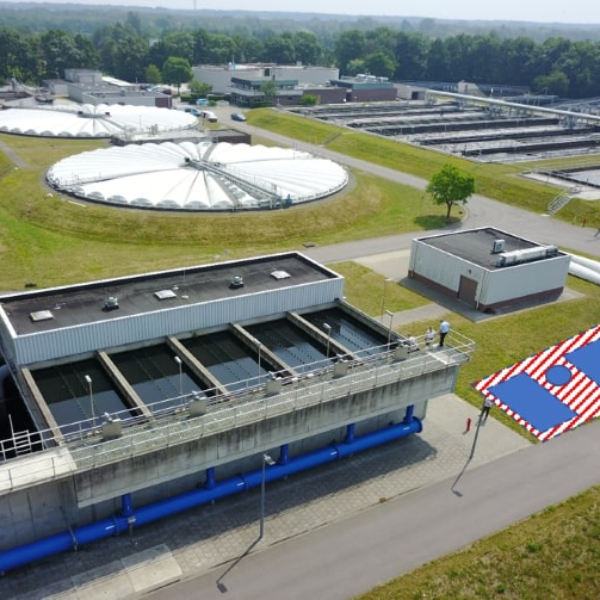Surprising results related to bromate formation in the O3-STEP filter

Surprising results related to bromate formation in the O3-STEP filter
Last summer, we launched the long-term pilot test of the O3-STEP filter at WWTP Horstermeer of the Amstel, Gooi en Vecht Water Authority (link). The O3-STEP filter is an additional purification step in wastewater treatment and consists of a combination of ozonation (oxidation with ozone, O3) and filtration over a denitrifying granular activated carbon (GAK) filter (1-STEP®). One point of concern when using ozone is the conversion of bromide to the potentially carcinogenic substance bromate. However, measurements show that the concentration of bromate formed by ozonation decreases in the GAK filter.
The main objective of the O3-STEP filter pilot system is to demonstrate that the combination of both techniques (ozone and GAK) can remove pharmaceutical residues from WWTP effluent. The combination of ozonation and GAK filtration has a number of advantages. They include a longer period of use (service life) of the activated carbon, the removal of a broader group of pharmaceutical residues with high efficiency and a reduction of the required ozone dose compared to the use of ozonation without GAK.
There also seems to be an additional advantage, namely decreased bromate in the 1-STEP® filter. The undesirable formation of the potentially carcinogenic bromate as a by-product during ozonation of (purified) wastewater is a major concern for water managers in the Netherlands. The bromide in the (treated) wastewater causes bromide to be converted to bromate when ozonation is used. For low ozone doses and low bromide concentrations, the risk of bromate formation is small. Although the ozone dose at the O3-STEP filter is low, we are still seeing some bromate formation in the pilot system when the incoming bromide concentrations are higher. However, a surprising effect can be observed here: after the activated carbon filter, the bromate concentration decreases again. The magnitude of this effect and the underlying mechanisms will be further investigated by the project team during the final part of the endurance test. Given the current stricter standards for bromate in the receiving surface water (<1 ug/L), this bromate reduction is extremely relevant.
Collaboration with partners
The research is being conducted in a collaboration between the Amstel, Gooi en Vecht Water Authority, Waternet, Witteveen+Bos, Nijhuis Saur Industries, Norit and Delft University of Technology and is part of the ‘Innovation Programme for Micro-contaminants from wastewater’ of the Foundation for Applied Water Research (STOWA) and the Ministry of Infrastructure and Water Management (I&W). As things now stand, the results of the O3-STEP pilot are promising and the water authority will make a decision later this year about the realisation of a full-scale O3-STEP filter system at WWTP Horstermeer for the removal of pharmaceutical residues.
Bromide concentrations in feed and bromate concentrations after ozonation and after the 1-STEP® filter
